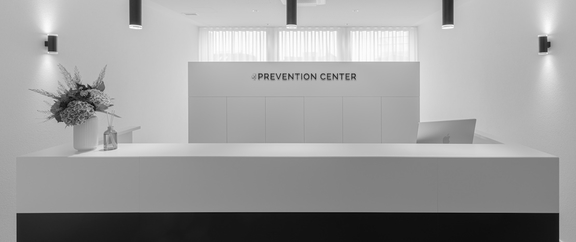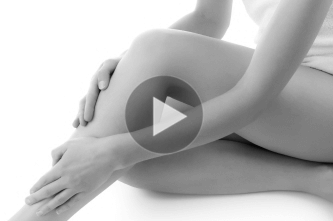Facts about Spider Vein Treatment
| Duration | 30 mins |
|---|---|
| Anaesthesia | None |
| Aftercare | Avoid direct sunlight and do not visit sauna or solarium for at least 4 weeks; avoid exercise for 1 week, several sessions required |
| Recovery time | None |
| Presentable | Immediately |
| Prices | CHF 500: Both legs CHF 200: Follow-up treatment |
Spider veins are very fine blue or red-coloured veins close to the top layer of skin. They often spread out in a fan shape, usually from a network of reticular varicose veins. Although spider veins are usually only a cosmetic problem, they are often accompanied by more severe varicose veins and can therefore also be the first symptom of serious venous disease. Treatment of spider veins without prior examination of the patient for larger varicose veins or a network of reticular varicose veins is often unsuccessful.
Spider Veins - a cosmetic problem
Often, these reddish-brown enlarged veins initially appear unobtrusively on the ankles and on the inner and outer upper thighs. However, they can multiply to such an extent that they become extremely inconvenient, and wearing short skirts and bikinis becomes a real problem.
Spider veins take their descriptive name from the patterns that they create, as they often resemble the structure of a spider's web.
Microsclerotherapy
Microsclerotherapy is a tested form of treatment that does not require lasers, an operation or anaesthetic. It can remove disruptive spider veins and mini varicose veins on the legs. One treatment session lasts just 10-15 minutes. An injection of a special solution reacts with the internal lining of the enlarged veins, causing them to stick together (sclerotherapy). The body then breaks down the vein naturally, and it disappears over time.
A spider vein examination also uses Doppler ultrasound. Long-lasting results are only possible when the "feeder" varicose veins hidden beneath the surface of the skin can be found and treated.
Sclerotherapy is a form of treatment that is particularly suited to smaller varicose veins that are not caused by back-pressure from larger varicose veins, or when the larger varicose veins that caused them have been removed during an operation. Sclerotherapy is particularly suited to treating net-shaped reticular varicose veins and spider veins.
During sclerotherapy
During sclerotherapy, a specially thinned alcohol solution is injected into the vein using a very fine needle. This alcohol damages the internal lining of the veins. The closed vein heals within 4-6 weeks, leaving an imperceptible scar.
In order avoid complications the doctor administers as small a concentration of sclerosing agent as possible, and the overall amount is restricted. One sclerotherapy treatment session lasts for a total of up to 45 minutes. Patients can return to work after treatment and partake in activities requiring a normal level of exertion. However, it is best to avoid strenuous activities (e.g. exercise) and long periods of sitting or standing. Immediately after sclerotherapy treatment the patient should walk for 20 minutes to half an hour to help prevent thrombosis in case the sclerosing agent has entered any deep veins.
Follow-up
You should go for a brisk walk for half an hour immediately after sclerotherapy (to prevent thrombosis).
In the first weeks after sclerotherapy you should avoid going to a sauna, or exposing the legs to any other form of intense heat. You may shower the day after treatment. You should avoid taking a warm bath during the first 2 days. Physical exercise that does not involve excessive strain or hyperventilation is permitted.
Risks & Side effects
Vein inflammation, thrombosis or lung embolisms can be almost entirely prevented by limiting the total quantity of sclerosing agent injected, wearing a compression bandage, and by walking briskly for half an hour after the treatment.
Discolouration of the sclerotised veins through clotting can occur if the haemoglobin is deposited as a brown pigment in the skin. The blood can be removed from the vein by administering small pinpricks. It is rare that this causes pigmentation changes. If they do occur, 60% heal within six months, and 95% heal within one year. Permanent pigmentation caused in this way is very rare.
New very fine blood vessels may temporarily appear. Development of new fine blood vessels in patients with susceptible skin can usually be prevented through the application of low doses of cortisone cream for a few days. Fortunately they usually subside of their own accord after six months.
Skin ulcers are very rare. Most only hurt a little or not at all, and usually heal with no visible effects. These complications can almost always be prevented by using as low a concentration of sclerosing agent as possible, and by using correct sclerotherapy technique.
Allergic reactions are rare; please inform the doctor treating you if you suffer from any allergies.
Possible slight pain and swelling 1-2 days after the treatment, especially if the patient has weak connective tissue. Longer-lasting swelling disappears with the use of compression stockings, and in some cases additional bandages and manual lymphatic drainage.
Contact

PREVENTION-CENTER AG ST. GALLEN
Kornhausstrasse 25
9000 St. Gallen
How to get there
PREVENTION-CENTER AG UTOSCHLOSS
Utoquai 31
8008 Zürich
How to get there
PREVENTION-CENTER AG ZUG
Aabachstrasse 8
6300 Zug
How to get there
PREVENTION-CENTER AG BERN
Kornhausplatz 7
3011 Bern
How to get there
VISITING HOURS
| MO, TU, WE, FR | 8 AM - 6 PM |
| TH | 8 AM - 20 PM |
OVER THE PHONE
| MO - FR | 8 AM - 5 PM |

